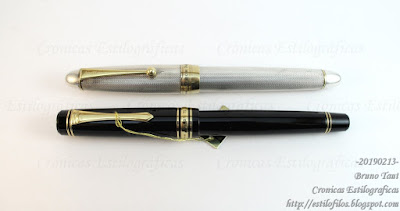But the market might be telling us that we are mistaken. Just a quick look at today's catalogs shows how many luxury brands offer nothing but cartridge-converter pens with plastic feeds. Materials and gold nibs are less of a problem, though.
Luxury pens of Platinum-Nakaya and Sailor are cartridge-converters. Pilot-Namiki does offer Japanese eyedroppers, but only for the biggest nib size. All the others, with nibs sizes 5, 10, and 20, are cartridge-converters despite how expensive they are.
Then, small makers like Eboya, Hakase, Ohashido, Stylo-Art Karuizawa, all focussed on higher-end pens only offer cartridge-converter pens. The only exception to this trend might be Masahiro and the newly-arrived Iwase Seisakusho.
Now, are these two brands –Masahiro and Iwase Seisakusho— on the right path or the success of all the other brands shows the opposite? How important are those details like ebonite feed and self-filling mechanisms in the final price –and in the final value-- of the pen?

A Masahiro pen. Expensive, but it implements an ebonite feed, a self-filling mechanism, an ebonite body, and a gold nib.
The market might be telling us that we stylophiles are still a minority in the business. Or it might only be that I am very mistaken about what we demand, and cartridge and converters and plastic feeds are perfectly all right even on very expensive pens.
Or it might be that we are very easy targets. After all, every pen has its charm, and all those cravings are not so important.
And that is the Namiki effect--expensive pens can be, in essence, very simple. Namiki has proven it through years in the market.
Iwase Seisakusho prototype – Takeda Jimuki Hisoku
Bruno Taut
Bunkyo, February 9th 2019
etiquetas: estilofilia, mercado, makie, Eboya, Hakase, StyloArt Karuizawa, Masahiro, Sailor, Ohashido, Iwase Seisakusho, Pilot, Platinum
Bruno Taut
Bunkyo, February 9th 2019
etiquetas: estilofilia, mercado, makie, Eboya, Hakase, StyloArt Karuizawa, Masahiro, Sailor, Ohashido, Iwase Seisakusho, Pilot, Platinum










































